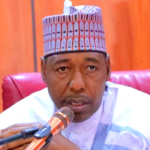The African Continental Free Trade Area is one of Africa’s 13 flagship projects under the Agenda 2063 development framework, launched by the African Union in 2012. The initiative targets increasing intra-African trade and upscaling Africa’s trading position in the global market.
The AfCFTA’s primary objectives include creating a single market for goods and services through the movement of persons to deepen economic integration in Africa and developing a liberalised market for goods and services through successive rounds of negotiations. It also intends to enhance the flow of capital and natural resources on the continent, as well as drive investments. Furthermore, it aims to lay the groundwork for the future establishment of a Continental Customs Union, promote sustainable and inclusive socio-economic development, advance gender equality, and drive structural transformation of member states. In addition, AfCFTA tilts toward driving industrial growth through diversification, regional value chain development, agricultural advancement, and enhanced food security, among other priorities.
The AfCFTA initiative was designed around some core protocols that include trade in goods and services, rules and procedures on dispute settlement, investment, intellectual property rights, and competition policy. Its operations are centered on some operational instruments known as the “AfCFTA instruments”, which include the rules of origin, tariff concessions, the continental online tool/mechanism for monitoring, reporting, and elimination of non-tariff barriers, the Pan-African Payments and Settlement System, and the African Trade Observatory, which enable trade integration in the continent. AfCFTA, since its establishment, has made notable progress toward achieving its objectives, upholding its significance for the African continent.
January 1, 2021, marked the start of trading under the AfCFTA, highlighting a credible milestone for Africa. The single market presented a combined gross domestic product of approximately $3.4tn, with liberalised tariffs increasing intra-regional trade potential by over $18.65bn. This initiative established a large regulatory framework binding almost the whole African countries while providing a stage for Africa to develop new regional value chains, expand value-added trade, and drive employment. The AfCFTA opened doors to a consumer base of 1.3 billion people, creating strong incentives for investment across the continent.
Currently, 54 AU member states have signed the AfCFTA Agreement, with 42 fully ratified and 39 depositing their instruments of ratification, demonstrating a strong commitment to African market integration. Member states pledged to remove tariffs on 97 per cent of tariff lines within a set timeframe. So far, 43 nations (78 per cent of AU members) and four customs unions—SACU, CEMAC, EAC, and ECOWAS, plus Mauritania, have submitted tariff offers.
On instruments, 87 per cent of tariff lines in rules of origin negotiations are finalised. In trade services, the protocol has advanced, with 42 initial submissions covering five priority areas. Key implementation steps include establishing a committee for Phase II protocols (investment, competition policy, intellectual property, e-commerce, and women and youth in trade) and operationalising the dispute settlement mechanism. The Business Investment Forum was also launched to enhance bilateral trade and investment.
According to the Chief Executive Officer of the African Continental Free Trade Area, H.E. Wamkele Mene, trade has grown significantly under the AfCFTA, with intra-African trade rising by 3.2 per cent to $192.2bn. The Guided Trade Initiative expanded trade participation from seven to 39 countries. The adoption of the protocol on Women and Youth in Trade also marked a milestone in economic inclusiveness and integration into the continental value chain.
Despite the significant progress achieved, the AfCFTA still faces formidable challenges that hinder its full implementation. Factors such as infrastructure deficits (roads, railways, and ports); non-tariff barriers; policy and regulatory harmonisation issues; political and institutional challenges; insecurity and political instability; lack of awareness and private sector involvement; limited financial and technical support; and digital and technological barriers contribute to constraining the agreement’s full implementation.
Infrastructure deficits: Although the building of interregional road, train, and port networks is contained in one of the flagship projects of Agenda 2063. However, until that is achieved, poor transport networks will continue to hinder the seamless flow of goods and services across borders, thus constraining the full implementation of the AfCFTA. Also, inadequate energy supply in most parts of the continent poses a significant constraint affecting manufacturing and industrialisation optimisation.
Non-tariff barriers: Obstacles, such as disparities in product standards, licensing requirements, and technical regulations, coupled with the complex customs procedures, corruption, and excessive bureaucracy, have further slowed down the full implementation of the AfCFTA.
Policy and regulatory harmonisation Issues: Despite the AfCFTA agreement, trade policies, tax regimes, and legal frameworks differ across the 54 member countries. Thus, harmonising policies across member states to achieve trade integration may prove difficult and may restrain the full implementation of a unified trade system.
Political and institutional challenges: Political instability remains common among African states, evidenced by the recurring military junta between 2020 and 2024 in countries, such as Niger, Sudan, Guinea, and Mali, among others. The sudden change in government may pose a drag on implementing the AfCFTA. Even among member states with relatively stable governments, the government may be reluctant to fully implement the agreement due to concerns bordering on revenue loss from tariff reduction.
Conflict andinsecurity: Conflict and insecurity are becoming a growing concern in Africa. As the security challenges persist, member states result in tightening their borders, thereby disrupting trade and making cross-border business operations difficult, thus hindering the full implementation of the AfCFTA, as well as challenging the objective.
The African Continental Free Trade Area is a transformative initiative poised to reshape Africa’s economy by boosting intra-African trade, fostering industrialisation, and accelerating growth. However, full implementation remains a challenge, requiring effective governance and execution. While AfCFTA is a continental project, its success hinges on national-level implementation.
Given the diverse challenges across member states, strategies must align with domestic realities to ensure effective adoption. Establishing in-country AfCFTA offices is essential to streamline implementation and serve as national administrative hubs, facilitating timely execution. Fully implementing AfCFTA is critical due to its far-reaching policy impact; it can strengthen Africa’s resilience against future pandemics, support the transition to green growth, enhance digital policy coherence, and advance the vision of ‘Africa beyond aid’.
- Orji, a seasoned researcher with interests in trade, education, food security, and energy, is a Free Trade Fellow with the Ominira Initiative







